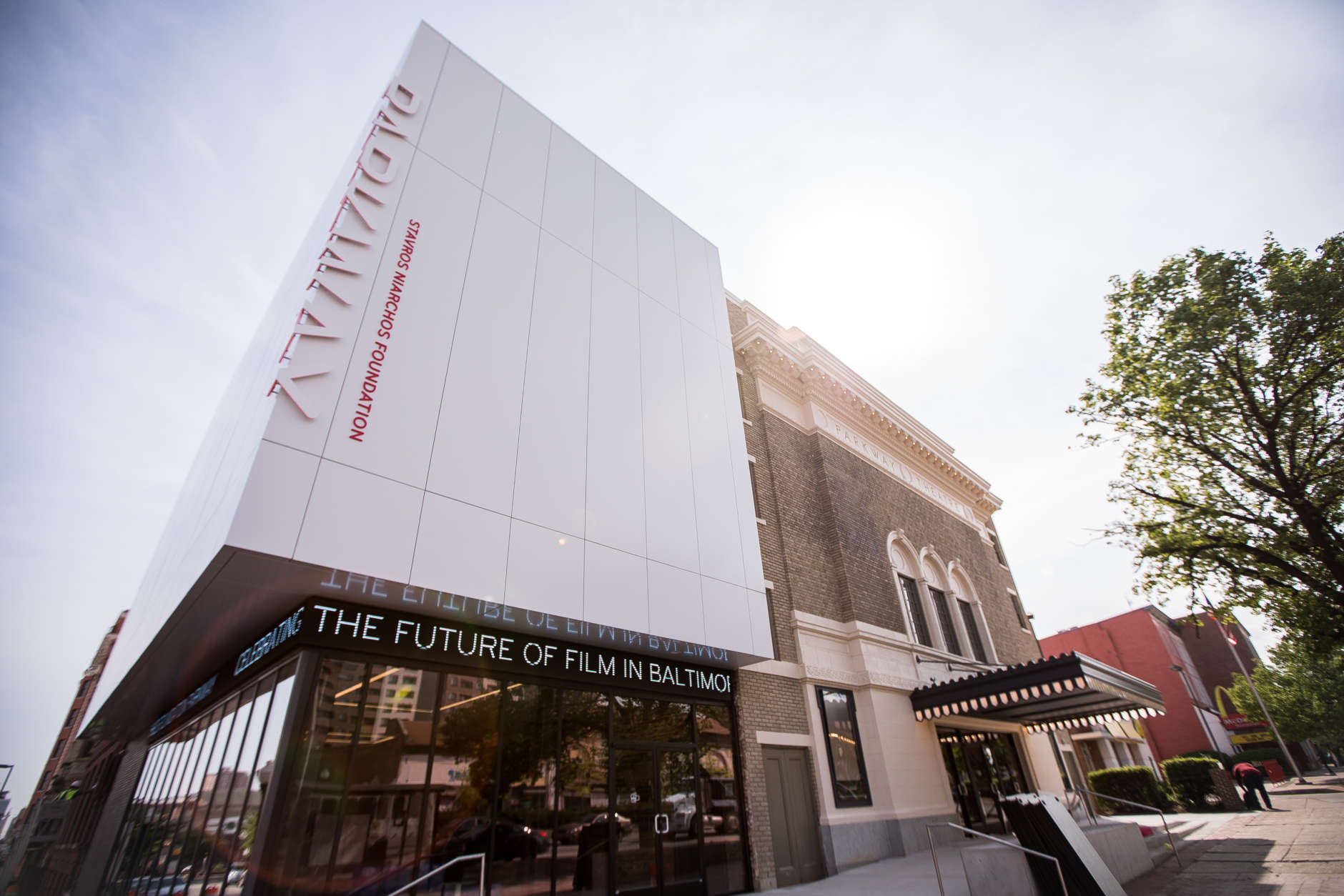
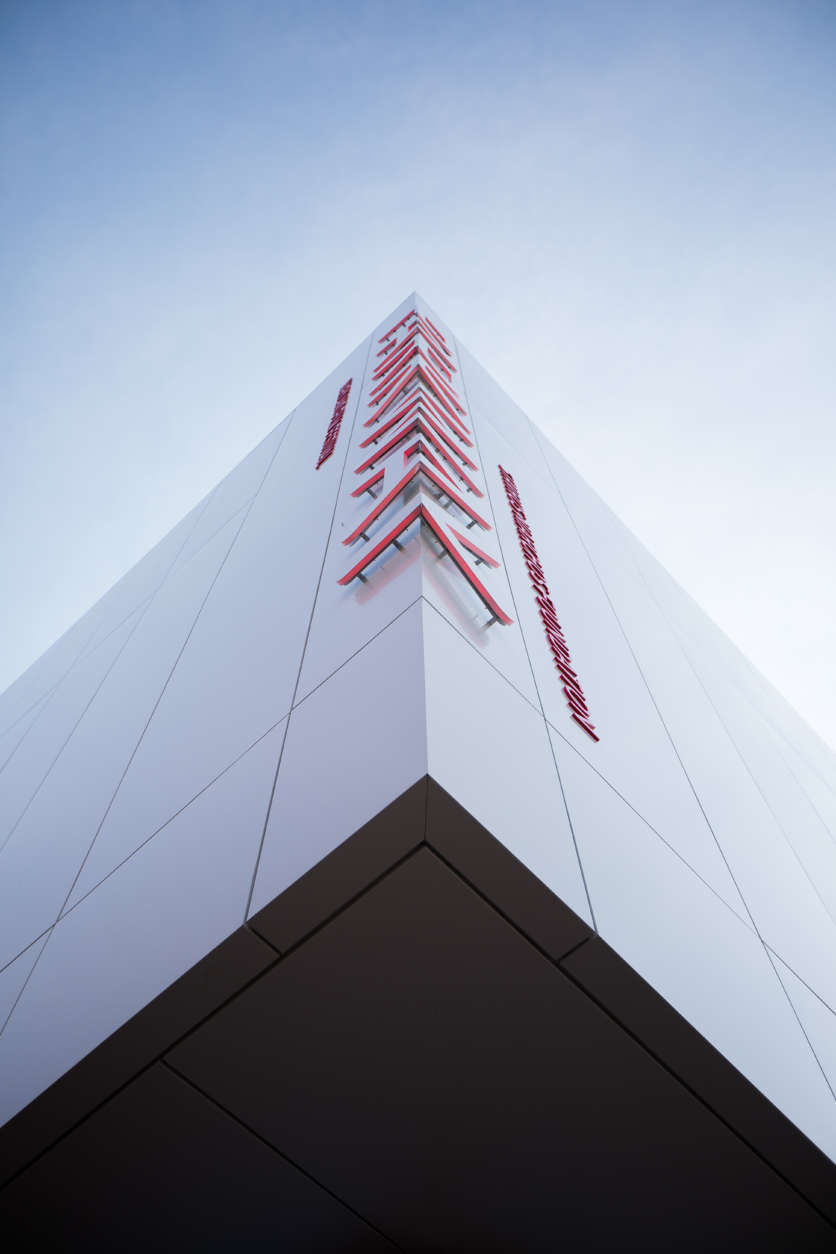
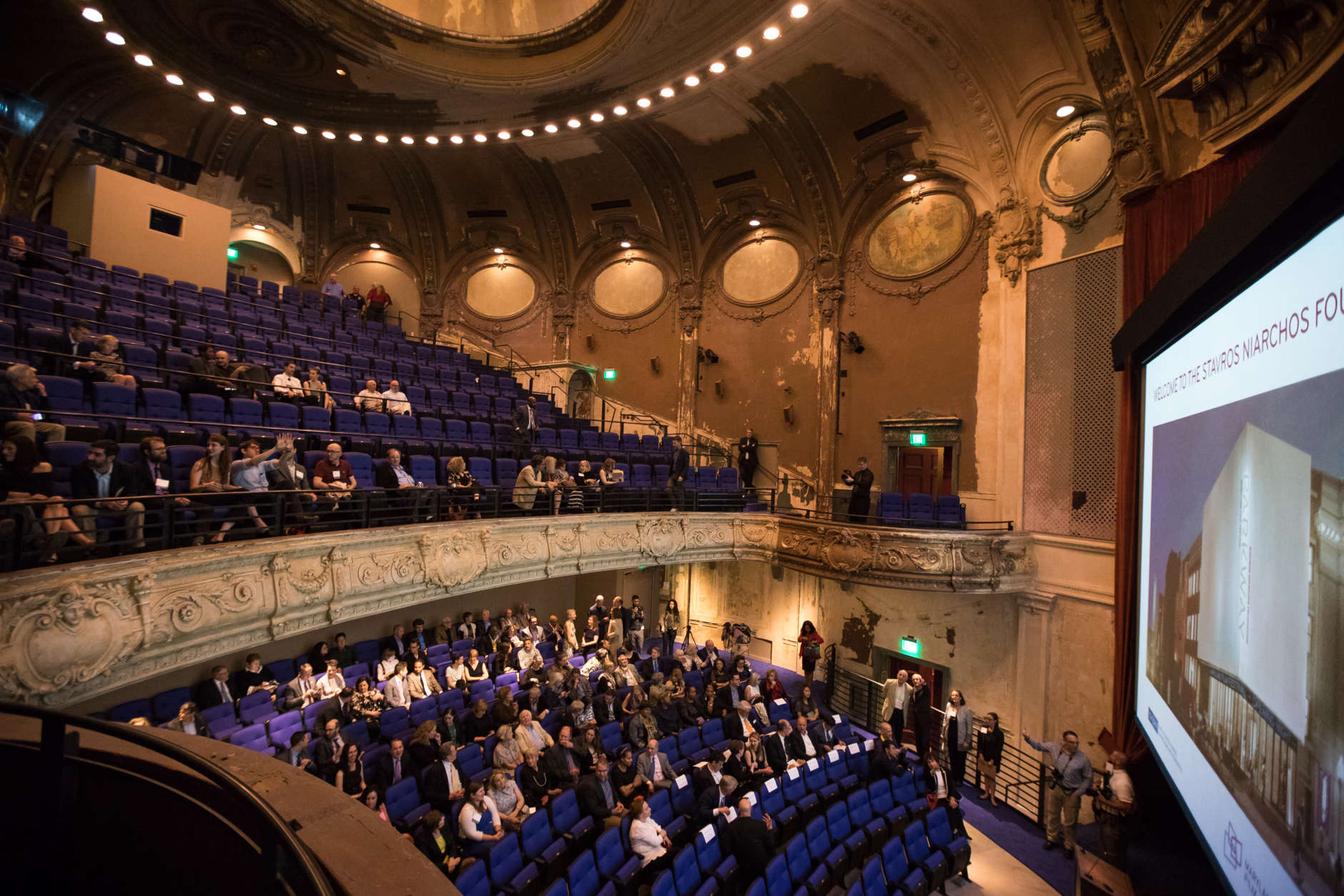
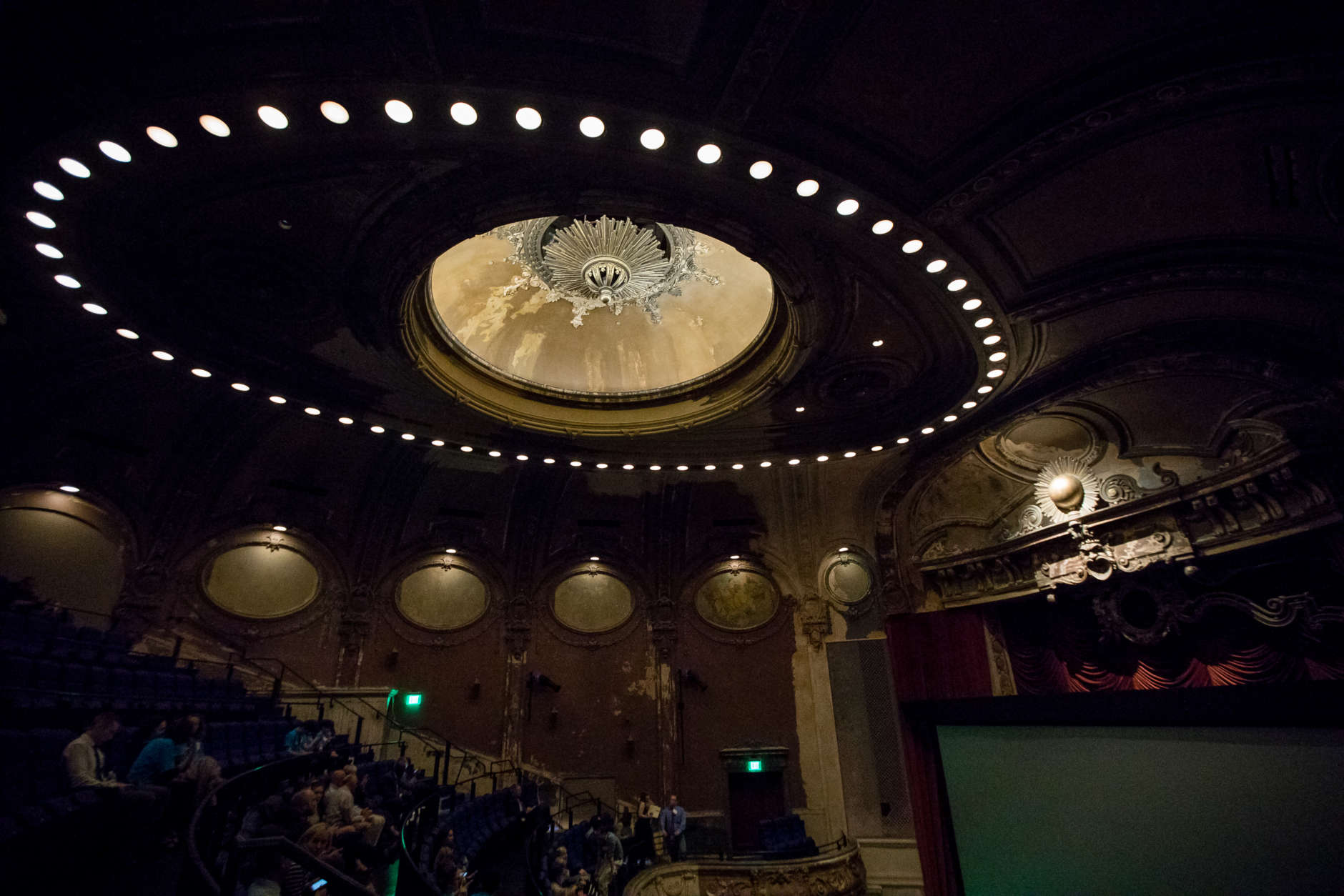
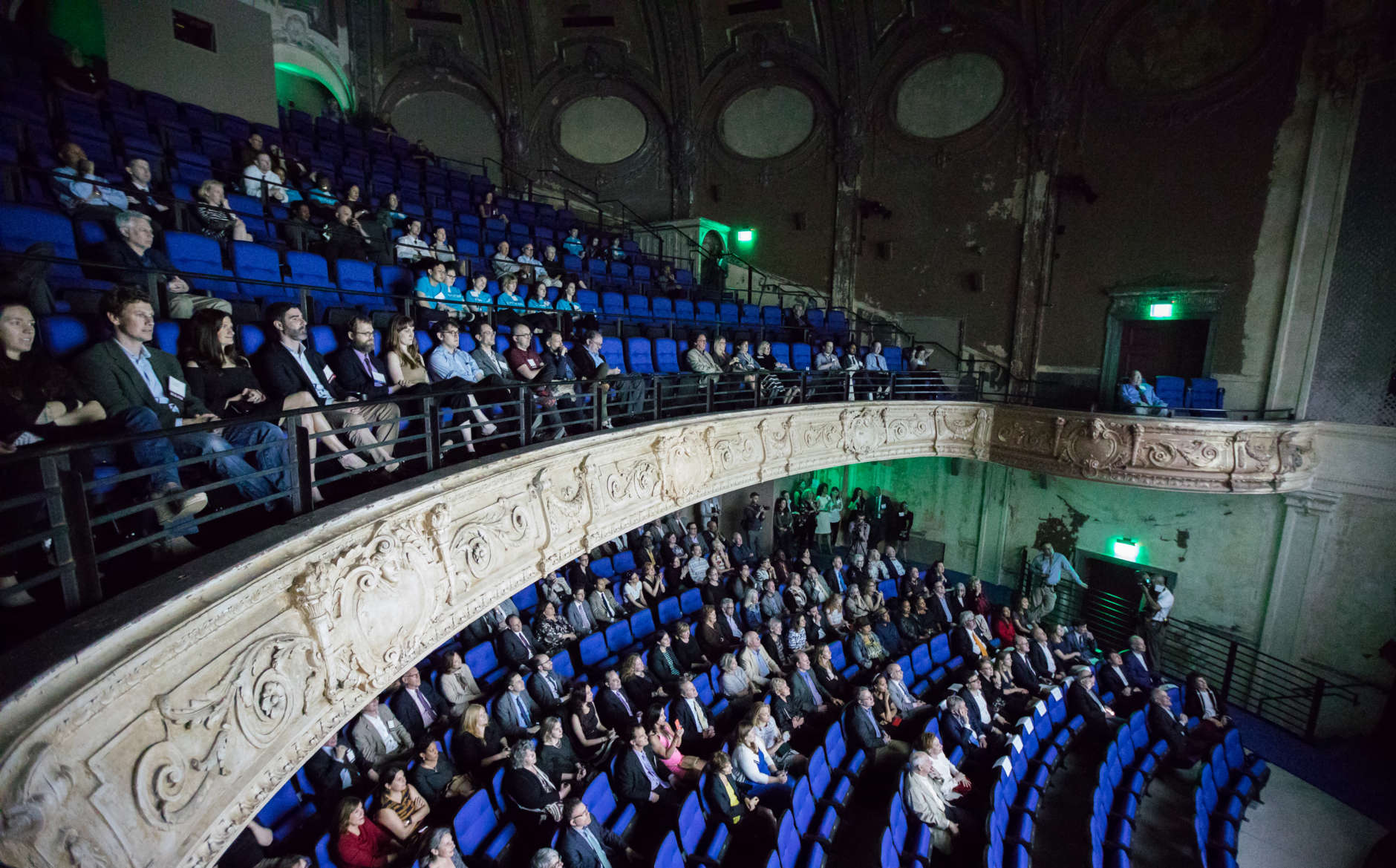
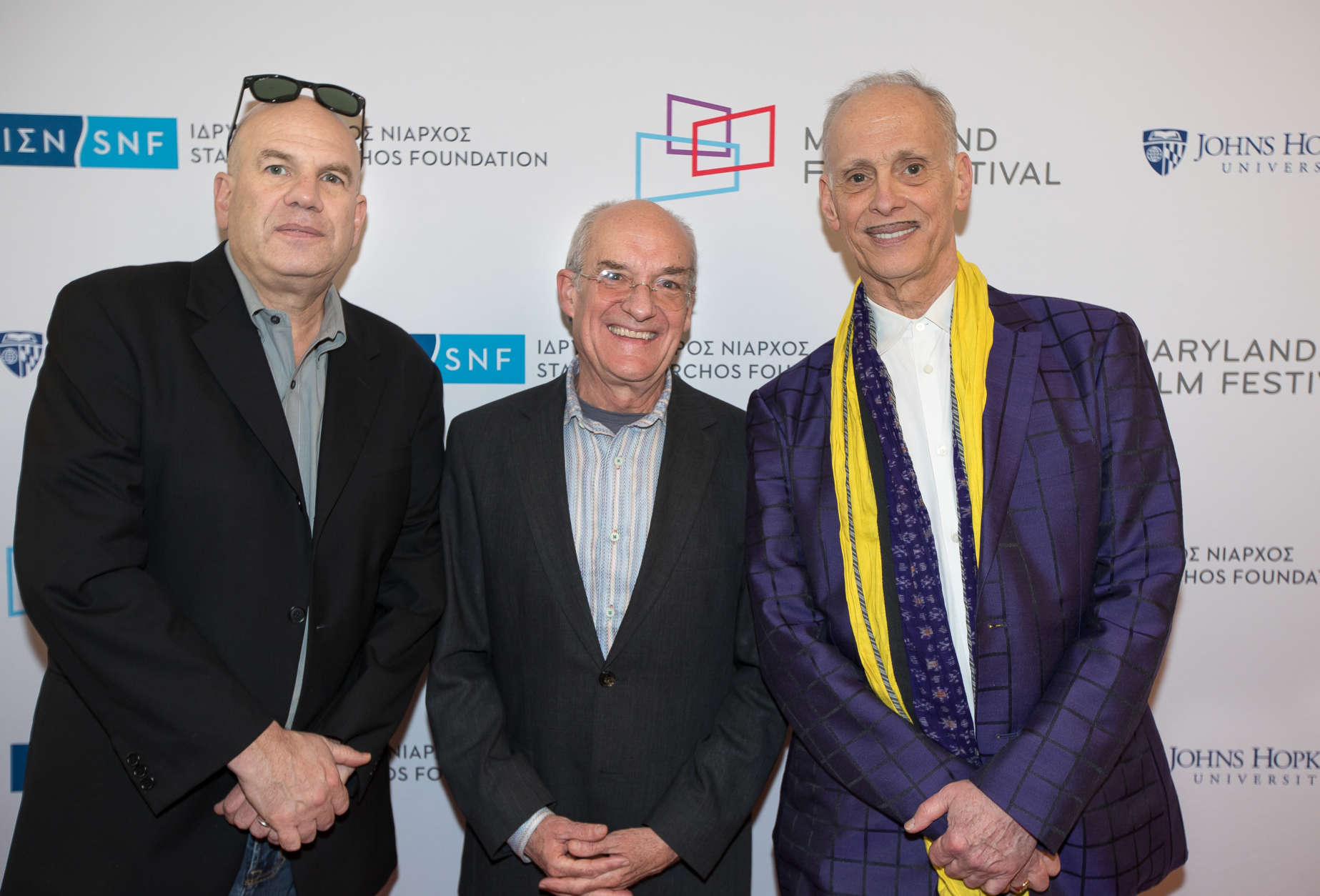
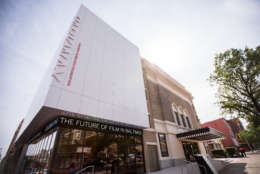

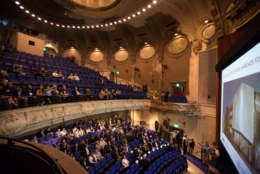
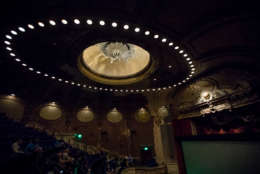
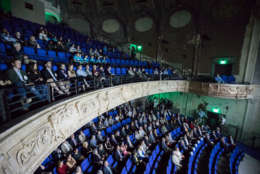
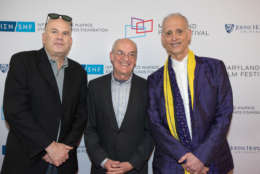
BALTIMORE — If you’ve never been to the Maryland Film Festival, or if you go every single year, this is the perfect time to rediscover a Baltimore institution.
That’s because the 19th annual festival will screen this year’s slate from Baltimore’s newly-restored Parkway Theatre, which opened in 1915 before closing in 1978. The historic theater just enjoyed a brilliant restoration in the vibrant Station North neighborhood, which is the heart of Charm City’s creativity as the first area to receive state designation as an Arts & Entertainment District in 2002.
“Baltimore is so much cooler than D.C.,” iconic Baltimore filmmaker John Waters told WTOP at the grand reopening, urging D.C. listeners to drive up Interstate 95 to check out the new space. “This festival was called many things before it was the Maryland Film Festival. … I’ve been involved with all of them since the beginning, but this one has certainly grown to become the biggest and the best.”
Also on hand for the grand reopening was Bethesda-raised David Simon, who’s brought us such hit TV shows as “Homicide: Life on the Street” (1993), “The Wire” (2002) and “Generation Kill” (2008).
“This is excellent,” Simon told WTOP. “It’s an incredibly valuable property as a venue for independent filmmakers and young filmmakers to get their work shown. I mean, it’s hard to get into theaters. Art houses are essential for that. Baltimore just acquired a top-flight art house here. … So, I’m elated.”
Opening in 1915, the 1,100-seat Parkway Theatre started screening silent films with live orchestras. It entered the “talkie” era as a remodeled 950-seat Loew’s Theater in 1926, installing Vitaphone and Movietone sound systems in 1928. For the next 14 years, it screened gems from Hollywood’s Golden Age, before closing in 1952. It reopened in 1956 as a 435-seat art-house theater, The 5 West, joining The Charles, The 7 East and The Playhouse to deliver diverse films from foreign and indie filmmakers.
“I saw ‘Psycho’ up the street, but I saw lots of Ingmar Bergman movies here,” Waters said. “People saw them because they could look at naked bodies. … The early ones! ‘Smiles of a Summer Night,’ ‘[Sawdust and] Tinsel,’ ‘Brink of Life.’ I loved Bergman! He had vomit in his movies before anybody! … [I was inspired] a huge amount. I’m the only person who ever saw Bergman on LSD at this theater.”
Sadly, Waters never got to screen his own revolutionary works at The Parkway, as his rise to cult-hero status on “Multiple Maniacs” (1970), “Pink Flamingos” (1972) and “Female Trouble” (1974) came as The Parkway struggled to stay open. It closed in 1978, a decade before “Hairspray” (1988).
Since 1978, the theater’s doors have been shut for good — or so we thought. After decades of decay, it was acquired from the city by the Maryland Film Festival in July 2015. Restoration began on Nov. 1, 2015, funded by both Johns Hopkins University and the Maryland Institute College of Art (MICA).
“We’re so excited for a variety of reasons,” MICA President Samuel Hoi told WTOP. “Our students will be able to use this theater for lectures, thesis showings, for internships. … Outside of [MICA], this is also an incredible re-happening for the city of Baltimore. I love things that are coming back with a very rich history, but with contemporary relevance and coolness. It’s a new beacon for the city.”
The three-screen Stavros Niarchos Foundation Parkway Theatre will host its first screenings this Wednesday at the Maryland Film Festival, before becoming a year-round film center starting May 12.
“The Parkway Theatre opening marks a quantum leap forward in the life of the festival,” Johns Hopkins President Ron Daniels said. “You’ve got a great cultural institution that’s being reborn and it’s in this magnificent space. … Having a strong, firm anchor for the role of film in Baltimore, open 365 days a year, right in the center of the city — this actually constitutes the geographic center of the city — I couldn’t think of a better, more powerful signal for the momentum and energy in the city today.”
“I used to see art movies here. Now I’m gonna see them again,” Waters said. “It’s perfect.”
Each year, Waters selects a personal pick to screen from the annals of cult cinema. This year, it’s Noel Marshall’s action-adventure “Roar” (1981), starring Tippi Hedren and her daughter Melanie Griffith about a family who visits Africa to meet their father, a brave man living with wild, uncaged jungle cats.
You’ll also see the work of rising filmmakers with 40 features whittled down from 1,000 submissions.
“We’re really looking for unique voices and visions,” festival programmer Eric Hatch told WTOP. “We have two world premieres. One is a film called ‘Dr. Brinks and Dr. Brinks,’ a fantastic dark comedy, and a sensitive, coming-of-age story called ‘Princess Cyd.’ Those aren’t movies you can see elsewhere.”
If you don’t recognize the names of the filmmakers yet, there’s a good chance you will someday soon.
“Barry Jenkins’ first film was here in 2008, ‘Medicine for Melancholy,’ a beautiful film, but you would never have known at that point that his second film would go on to win the Oscar with ‘Moonlight,'” festival director Jed Dietz told WTOP. “Kathryn Bigelow was here with ‘Hurt Locker’ several years back and then she went on … to be the first woman to win Best Director, so you just never know when these things are popping out. All I know is that there is amazing talent coming in with amazing films.”
What do the festival judges look for when determining which films make the cut?
“There’s no formula for it,” Dietz said. “The most important thing to be thinking about as a young filmmaker [is] make something that really speaks to you and you want to spend a year or two or more of your life making. That’s what’s gonna make it. If you’re trying to guess success, you’re gonna fail.”
What advice does Waters have for the next generation of Maryland filmmakers?
“It doesn’t matter where you live anymore with the internet,” Waters said. “Don’t ever leave where you grow up. Everywhere’s cool now. There’s cool people everywhere. Everybody sees every movie everywhere with the internet. You don’t have to leave. Just find somebody who likes your work.”
For Simon, that person was Barry Levinson, the Baltimore-born filmmaker who directed “Diner,” “The Natural,” “Good Morning Vietnam” and “Rain Man.” Levinson read Simon’s book “Homicide: A Year on the Killing Streets” based on his time as a Baltimore Sun journalist following a Baltimore homicide unit. The book became the acclaimed NBC cop series “Homicide: Life on the Street” (1993 to 1999).
“My path to being a television writer and producer was really improbable; it came off a prose work I did that Barry Levinson bought, then they filmed it in my town and I learned how to do it through a back door,” Simon said. “I didn’t go to film school. I didn’t know which end of the camera was which. … I would say one of the things is just to do it. … There’s less required now in terms of equipment to go out and tell a film narrative, certainly to create your first short and try to get onto the festival circuit.”
Waters says to just keep making movies until you find your voice.
“Don’t worry if it’s technically screwed up in the beginning,” Waters said. “It’s about content, wit and humor. Surprise people! I have a whole book out, ‘Make Trouble,’ which asks you to horrify me! That’s what youth should be doing. … Today, if some kid made a film with his cellphone camera, they could show it here! That’s the point. … If nobody will show your movie, bring it here and they probably will!”
Click here for more on the Maryland Film Festival. Click here for more on the Parkway Theatre restoration.








